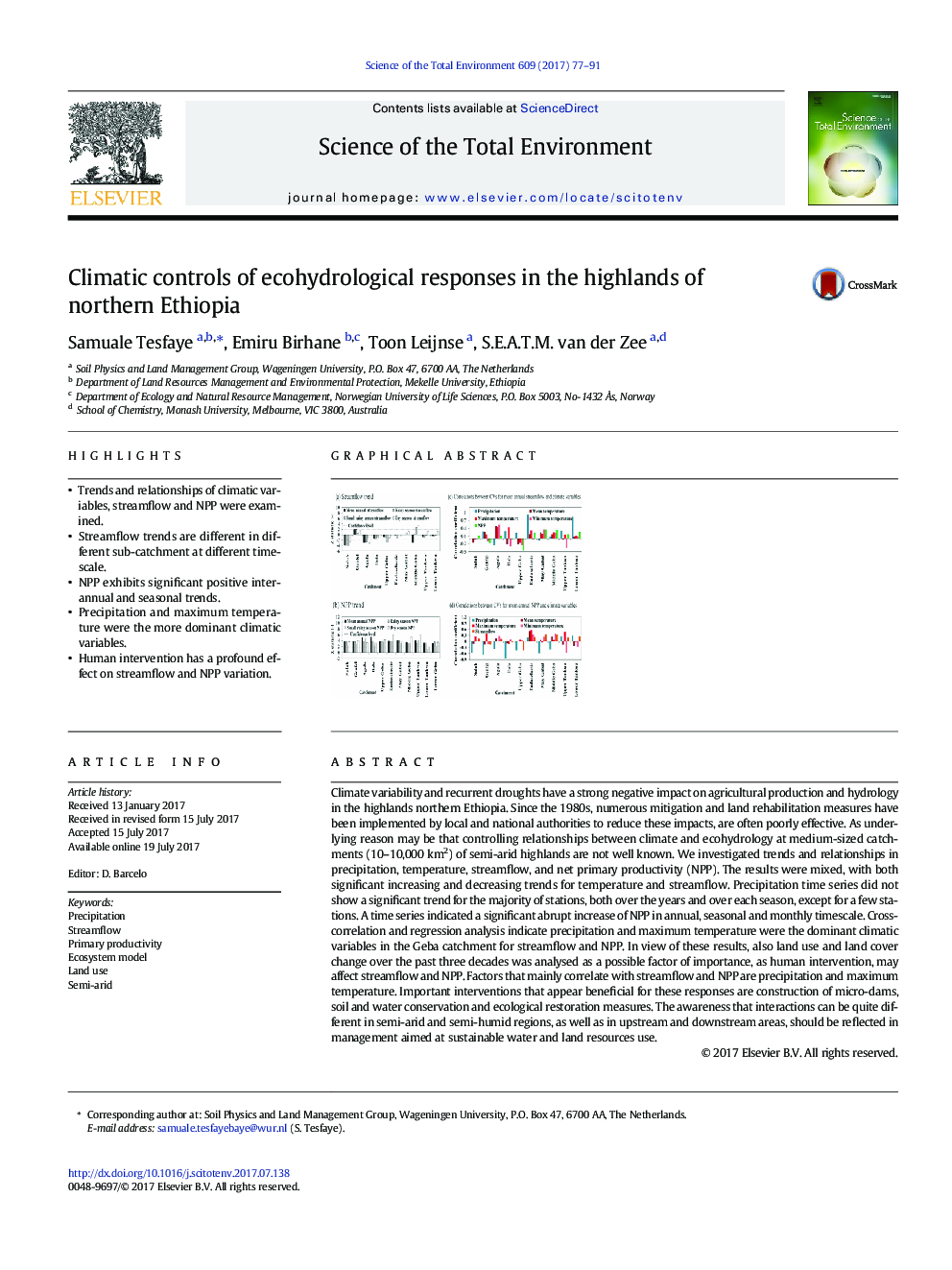| کد مقاله | کد نشریه | سال انتشار | مقاله انگلیسی | نسخه تمام متن |
|---|---|---|---|---|
| 5750732 | 1619693 | 2017 | 15 صفحه PDF | دانلود رایگان |
- Trends and relationships of climatic variables, streamflow and NPP were examined.
- Streamflow trends are different in different sub-catchment at different timescale.
- NPP exhibits significant positive inter-annual and seasonal trends.
- Precipitation and maximum temperature were the more dominant climatic variables.
- Human intervention has a profound effect on streamflow and NPP variation.
Climate variability and recurrent droughts have a strong negative impact on agricultural production and hydrology in the highlands northern Ethiopia. Since the 1980s, numerous mitigation and land rehabilitation measures have been implemented by local and national authorities to reduce these impacts, are often poorly effective. As underlying reason may be that controlling relationships between climate and ecohydrology at medium-sized catchments (10-10,000Â km2) of semi-arid highlands are not well known. We investigated trends and relationships in precipitation, temperature, streamflow, and net primary productivity (NPP). The results were mixed, with both significant increasing and decreasing trends for temperature and streamflow. Precipitation time series did not show a significant trend for the majority of stations, both over the years and over each season, except for a few stations. A time series indicated a significant abrupt increase of NPP in annual, seasonal and monthly timescale. Cross-correlation and regression analysis indicate precipitation and maximum temperature were the dominant climatic variables in the Geba catchment for streamflow and NPP. In view of these results, also land use and land cover change over the past three decades was analysed as a possible factor of importance, as human intervention, may affect streamflow and NPP. Factors that mainly correlate with streamflow and NPP are precipitation and maximum temperature. Important interventions that appear beneficial for these responses are construction of micro-dams, soil and water conservation and ecological restoration measures. The awareness that interactions can be quite different in semi-arid and semi-humid regions, as well as in upstream and downstream areas, should be reflected in management aimed at sustainable water and land resources use.
209
Journal: Science of The Total Environment - Volume 609, 31 December 2017, Pages 77-91
